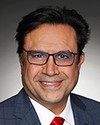No.
Evidence of meeting #84 for Government Operations and Estimates in the 44th Parliament, 1st session. (The original version is on Parliament’s site, as are the minutes.) The winning word was cbsa.
A video is available from Parliament.
Evidence of meeting #84 for Government Operations and Estimates in the 44th Parliament, 1st session. (The original version is on Parliament’s site, as are the minutes.) The winning word was cbsa.
A video is available from Parliament.
Former Director General, Business Application Services Directorate, Canada Border Services Agency
Former Executive Director, Border Technologies Innovation Directorate, Canada Border Services Agency
No.
Liberal

Majid Jowhari Liberal Richmond Hill, ON
Thank you, Mr. Chair.
I'll be sharing my time with my colleague, Mr. Kusmierczyk.
Mr. MacDonald, can you explain the difference between a pilot and an assessment, as you call it?
Former Director General, Business Application Services Directorate, Canada Border Services Agency
A lot of times people call things pilots, but they just jump right in and they don't have any ability to measure its success or failure or its cost or its benefit. You try something, like, let's try this app. Then afterwards you're stuck with it, because everybody likes it, but you don't know—
Liberal

Majid Jowhari Liberal Richmond Hill, ON
There's a pilot, then, and there's a feasibility study. From an output point of view, is the feasibility study output the same as a pilot output?
Former Director General, Business Application Services Directorate, Canada Border Services Agency
Not at all.
Liberal
Former Director General, Business Application Services Directorate, Canada Border Services Agency
The reason we would do a feasibility study is so that when you actually run the pilot, you can measure whether it was successful or not.
Liberal

Majid Jowhari Liberal Richmond Hill, ON
Is it fair to say that if we were going to do a pilot, they would be configuring their system based on all the data, to be able to prove that it worked?
Former Director General, Business Application Services Directorate, Canada Border Services Agency
A hundred per cent.
Liberal

Majid Jowhari Liberal Richmond Hill, ON
Whereas the feasibility study is whether there are going to be proper milestones, and those milestones, those six milestones, happen to be what—
Former Director General, Business Application Services Directorate, Canada Border Services Agency
A hundred per cent. You would look at whether it would even work in the first place before you would go and buy something.
Liberal

Majid Jowhari Liberal Richmond Hill, ON
I believe that after two of those six milestones were completed, there was a decision made to stop. There is a contradiction about why it stopped. Whereas we are hearing from Botler that it was fully configured and they were ready to go on a pilot, we then hear CBSA saying no, that on the feasibility study two of the milestones were done and the rest of them stopped because they were not compliant or there was a shortage of staff and funding for that.
Which one is true?
Former Executive Director, Border Technologies Innovation Directorate, Canada Border Services Agency
I can answer that, Mr. Chair.
Two of the milestones were completed and paid for. The client was CBSA's human resources branch. They issued a note to us—and it's in the package—requesting that we cancel the TA, citing reasons of capacity and lack of employee resources that they could commit to the project. We then executed on the request and cancelled the TA.
The other four milestones of a feasibility study were never done.
Liberal

Majid Jowhari Liberal Richmond Hill, ON
Thank you.
I will yield the rest of my time to Mr. Kusmierczyk.
Liberal

Irek Kusmierczyk Liberal Windsor—Tecumseh, ON
Mr. Cameron, the ArriveCAN project—because this is the ArriveCAN study—came together in five days, as was mentioned by the players.
In a normal situation, in a non-national emergency situation, unlike what COVID represented, how long would a process like this take on average?
Former Director General, Business Application Services Directorate, Canada Border Services Agency
Several months.
Liberal
Former Director General, Business Application Services Directorate, Canada Border Services Agency
At the CBSA, it would be even longer. Minh Doan did say he had 1,400 people. There were so many distributed teams, different technology stacks and everything else. Easily, it would be four to six months.
Liberal

Irek Kusmierczyk Liberal Windsor—Tecumseh, ON
You were asked to do a six-month project in five days, to pull it together.
Can you put that into context for us?
Former Director General, Business Application Services Directorate, Canada Border Services Agency
It was very fast-paced; it was very intense. Our teams worked incredibly hard. I had really incredible people whom I worked with. They were professionals. They knew very quickly what there was and what there wasn't on the table with which to work.
Maybe Mr. Utano wants to finish.
Former Executive Director, Border Technologies Innovation Directorate, Canada Border Services Agency
The business requirements were never defined when the pandemic hit. We never had the whole picture. That was the challenge. We started with a basic digital form—fairly simple, fairly straightforward—but then the complexity came with pre-border, at-border, post-border, notifications, accounts, etc.
The complexity, the technology and the infrastructure never existed when the pandemic started.